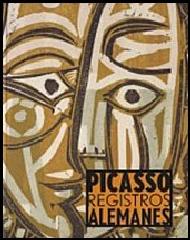Innumerable studies and essays have been published by experts around the world on highly diverse aspects of Pablo Picasso's work. His relationship with the land of his birth, Spain, and his adopted homeland, France, continue to appeal to many art historians. Yet the relationship between Picasso's art and German art has not yet been examined in depth. Therefore, this exhibition at Museo Picasso Málaga, curated by its artistic director, José Lebrero Stals, undoubtedly opens up an important new avenue by presenting 22 records based on the connections, affiliations and divergences between Pablo Picasso and a select group of German artists who are now considered classic modern painters, and who radically changed the direction of the history of art. Although it cannot be said that Picasso's influence had a specific impact in Germany, the exhibition does highlight both the interest and resistance shown towards Picasso by those German modern artists who did not choose to employ abstraction. This paradox can be seen in the way such artists took up a position and developed their own work while fully aware of the innovative contributions of the Spanish artist - mainly because of the impact of Cubism - yet without this preventing them from seeking ways to create their own cultural idiosyncracy, thus resisting the danger of falling victim to Picasso's aesthetic force.

(0 Comentarios)